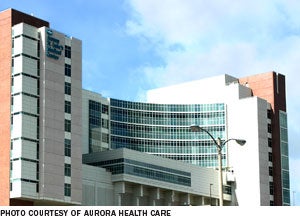Health care system makes conserving energy part of its mission

A combination of supply side market volatility and a decision to improve operational efficiency and reduce environmental impact spurred Aurora Health Care, Kenosha, Wis., to undertake an energy management program that has yielded dramatic results.
The health care system's 15 hospitals and four supporting facilities totaling more than 7.7 million square feet represented the most energy-intense facilities in Aurora when the program launched in 2008. The sites cut energy use by 15 percent by 2012.
The energy reduction translates to an estimated $8.6 million in savings over the four-year period and an annual reduction of 23,100 tons of carbon dioxide emissions, says Jedd Winkler, energy program manager, facilities operations. Minimal capital investment was required. ]
The program was prompted in part by volatility in utility costs, Winkler says. "At that time, natural gas was fluctuating. In addition, we wanted to do a better job of managing our resources from a facilities standpoint and then cascading the benefits systemwide," he says.
A culture of openness to new ideas and innovation helped to get the energy-saving program rolling, which started with Nick Turkal, M.D., Aurora Health Care's chief executive officer and president, signing a letter of agreement with the Environmental Protection Agency's Energy Star to cut energy use by 12 percent in three years.
Pearson Engineering, a consulting firm in Madison, Wis., was instrumental in helping Aurora's facility department benchmark mechanical system performance, calculate weather-normalized energy models and track utility usage, Winkler says.
The facility managers maintained daily tracking reports, and new energy goals were established at the end of each year. Aurora continues to utilize the energy management system Pearson helped to establish. "One of our corporate goals is to responsibly manage resources, so the program ties into that," he says.
Among specific energy-saving actions taken, Winkler points to establishing better operation and scheduling of HVAC systems as having a major impact. Other important steps include lighting upgrades and updating boiler burner controls for more efficient operations, he notes. The energy savings enable each facility within Aurora to reinvest in additional improvements to HVAC and other systems.
Winkler and two colleagues gave a presentation on the program in July at the American Society for Healthcare Engineering's annual conference in Atlanta.




